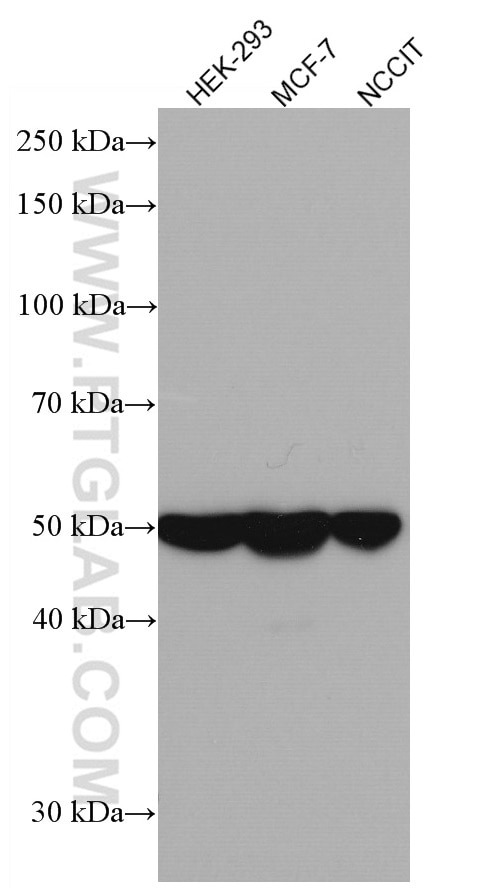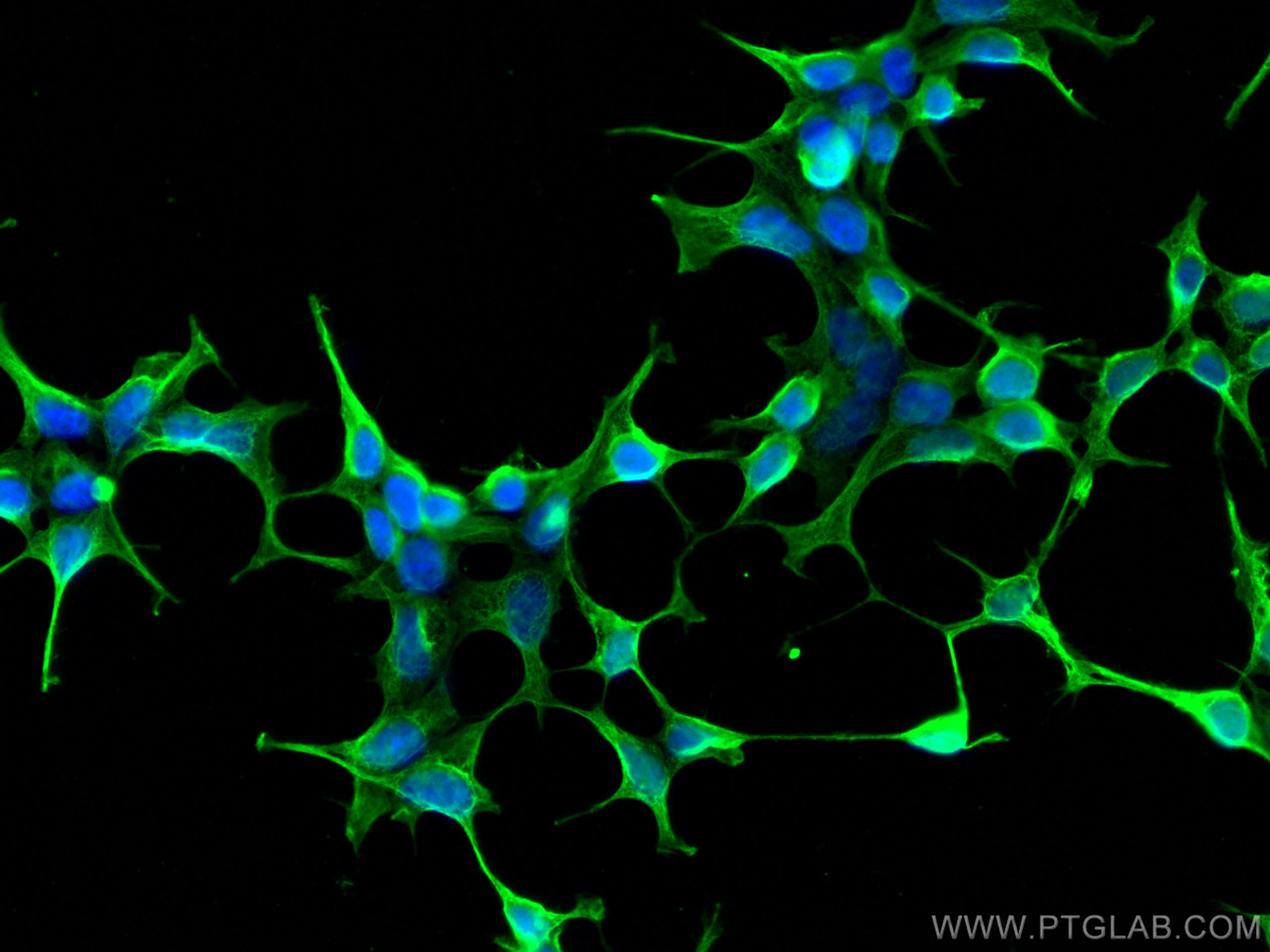Product Information
66758-1-PBS targets DKK3 in WB, IHC, IF/ICC, Indirect ELISA applications and shows reactivity with Human, Mouse, Rat, Pig samples.
| Tested Reactivity | Human, Mouse, Rat, Pig |
| Host / Isotype | Mouse / IgG2b |
| Class | Monoclonal |
| Type | Antibody |
| Immunogen |
CatNo: Ag23615 Product name: Recombinant human DKK3 protein Source: e coli.-derived, PET28a Tag: 6*His Domain: 37-350 aa of BC007660 Sequence: ALSYPQEEATLNEMFREVEELMEDTQHKLRSAVEEMEAEEAAAKASSEVNLANLPPSYHNETNTDTKVGNNTIHVHREIHKITNNQTGQMVFSETVITSVGDEEGRRSHECIIDEDCGPSMYCQFASFQYTCQPCRGQRMLCTRDSECCGDQLCVWGHCTKMATRGSNGTICDNQRDCQPGLCCAFQRGLLFPVCTPLPVEGELCHDPASRLLDLITWELEPDGALDRCPCASGLLCQPHSHSLVYVCKPTFVGSRDQDGEILLPREVPDEYEVGSFMEEVRQELEDLERSLTEEMALGEPAAAAAALLGGEEI Predict reactive species |
| Full Name | dickkopf homolog 3 (Xenopus laevis) |
| Calculated Molecular Weight | 38 kDa |
| Observed Molecular Weight | 40 kDa, 50-55 kDa |
| GenBank Accession Number | BC007660 |
| Gene Symbol | DKK3 |
| Gene ID (NCBI) | 27122 |
| RRID | AB_2882104 |
| Conjugate | Unconjugated |
| Form | Liquid |
| Purification Method | Protein A purification |
| UNIPROT ID | Q9UBP4 |
| Storage Buffer | PBS only, pH 7.3. |
| Storage Conditions | Store at -80°C. |
Background Information
DKK3, also named as REIC, belongs to the dickkopf family. It antagonizes canonical Wnt signaling by inhibiting LRP5/6 interaction with Wnt and by forming a ternary complex with the transmembrane protein KREMEN that promotes internalization of LRP5/6. DKKs play an important role in vertebrate development, where they locally inhibit Wnt regulated processes such as antero-posterior axial patterning, limb development, somitogenesis and eye formation. In the adult, Dkks are implicated in bone formation and bone disease, cancer and Alzheimer's disea. The adenovirus carrying REIC/Dkk-3 (Ad-REIC) exhibits a potent tumor-specific cell-killing function for various human cancers. It has also become evident that some human cancers are resistant to Ad-REIC-induced apoptosis. The DKK3 is a Glycosylation protein with MW about 55 kDa or 38-43 kDa.














